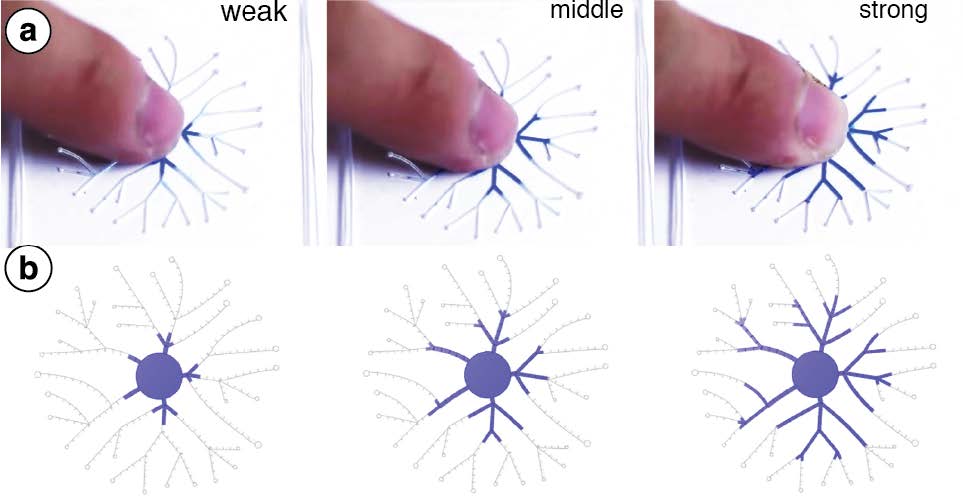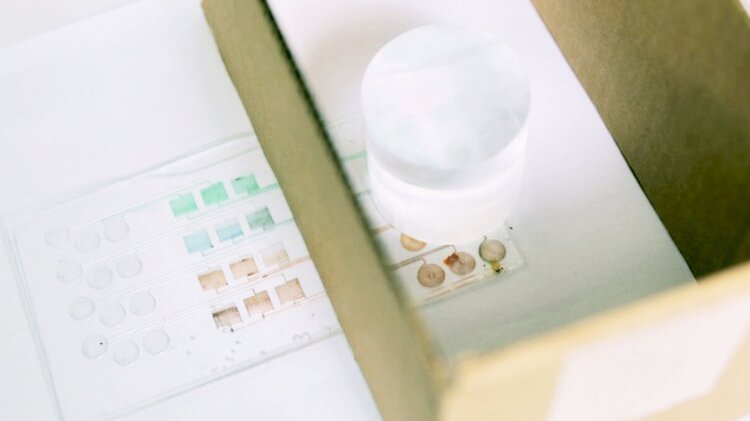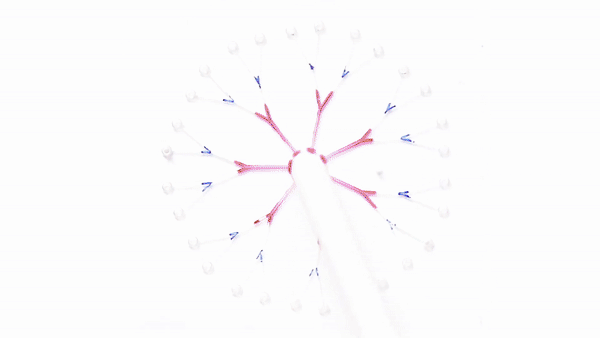2019-2020
Hila Mor, Tianyu Yu, Ken Nakagaki, Benjamin Harvey Miller, Yichen Jia, and Hiroshi Ishii
Venous Materials is a novel concept and approach of an interactive material utilizing fluidic channels. We present a design method for fluidic mechanisms that respond to deformation by mechanical inputs from the user, such as pressure and bending. We consider the fluid as the medium to drive tangible information triggered by deformation, and at the same time, to function as a responsive display of that information. We hope our work will inspire researchers, designers, and artists by laying down a foundation for the growth of additional research within the realm of Venous Materials as interactive material design.
Publications:
Contributions:
- Led the work on the computational design and simulation tool, including a parametric design software for fluidic patterns with minimal input requirements, and an interactive simulation function of the fluidic color-changing appearance, applied by a numerical algorithm based on a quasi-static flow model.
- Designed the featured application: an interactive fluidic display that illustrates writing animations for learning.
Venous Materials
Primitives and design space
To realize Venous Materials, we created a wide design space that shows the dynamic display capabilities, user affordances, and aesthetics opportunities using different geometries, fluidic colors, and structures.
Geometry pattern (fractal)
Non-linearity
Multilayer
Deformation
Design tool
To provide users with a simple way to create and validate designs of fluidic structures, we built a software platform and design tool UI. This design tool allows users to quickly design the geometry, and simulate the flow with intended mechanical force dynamically.
Our simulation method aims to calculate a dynamic flow map for the venous structures according to the deformation input, using both theoretical analysis and experimental results. The core part of this method is a comparison of two pressure maps, which we will refer to as the Resistant Pressure Map and Actuated Pressure Map.


Quasi-static fluid model for simulation

(a) Experiment results. (b) Simulation results
Fabrication Pipeline
We then fabricated Venous Materials with a series of steps, including laser engraving, adhesion, fluid injection, and sealing.

Fabrication pipeline
Application
Venous Materials opens up exciting potential use cases to embed dynamic analog interactions in everyday objects, such as in wearables to visualize on-body motion, pressure, and body balance for rehabilitation or dance lessons. Attached to objects such as a paintbrush or piano keys, it can be applied for actions that involve fine motor skills and learning activities.
In everyday life, everywhere around us, we use a lot of graphics: texts, signs, lines, and graphs that represent dynamic information. Yet, they are static—what if we could use Venous Materials to make these graphics dance?
In this application, Venous Materials engages the user by tangibly making information flow. This interactive experience can be embedded in textbooks: as an example, we use the sequential nature of the flow to display the stroke order of writing a Chinese character in a textbook, which is important when learning Chinese calligraphy. Here we are also visualizing graph progress where users can dynamically choose and compare data.
Wearable Venous Materials can be used to raise the user’s awareness of their body balance and motion for rehabilitation or dance lessons. We designed the shoe prototype to visualize the pressure applied on the sole of the shoe, while the display is located on the top of the shoe.
Learning new activities often involves granular understanding of the motion or pressure that one should apply on objects, such as playing the piano or painting. Venous Materials can display the dynamic applied pressure during the learning process.
For the packaging industry, which often requires cheap and simple analog indicators, Venous Materials has great potential for both capturing pressure information on the package and for transmitting content condition information from the inside of the package to the outside.

Further detials: Venous Materials: Towards Interactive Fluidic Mechanisms (ACM CHI ’20)
